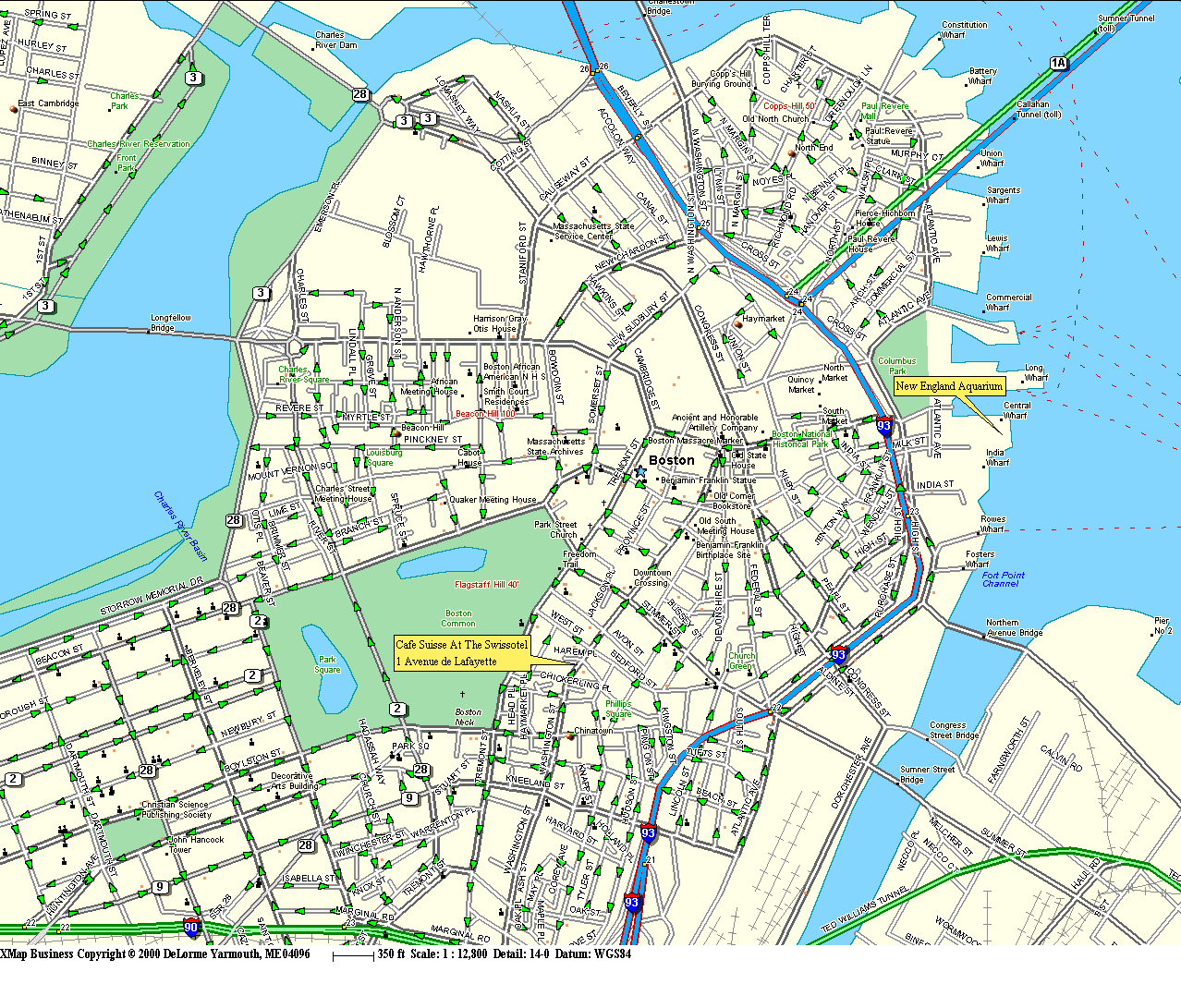As the myth goes, most of the streets in downtown Boston were originally cow paths or deer trails that were used for human traffic as the town grew. This seems to be a myth (See here) and the alternative explanations of hilly topography and a poorly planned village with periods of rapid, unregulated growth seem more likely. Despite relatively modern architecture, the haphazard road plan lends the older parts of the city an Old World feel, especially in residential areas of the North End.
Fig. 1: the irregular street plan of Boston compared to a very regular grid typical of U. S. cities (Manhattan).
Fig. 2: the labyrinthine warren of Boston's North End, the Italian district. Coincidence?
Another interesting aspect is the fact that Boston's landscape has been more modified than a Dutch polder. Originally almost an island with a spindly isthmus, the peninsula on which Boston is built was steadily expanded by leveling the hilly landscape and backfilling the swamps, bays, and rivers. This practice was most pronounced during the 19th century, when the Back Bay neighborhood (where I am) was created from what was previously a section of bay on the the Charles River. Not even all of Boston Common is on original land.
Fig. 3: expansion of Boston by backfilling, mid 19th- early 20th century.
St. Clement's Shrine/Our Lady of Grace Seminary is located at the edge of the Back Bay near Fenway Park, at the corner of Boylston and Ipswich. Besides Fenway, other notable landmarks nearby include the Boston Public Library main branch, Trinity Church, the Prudential Center (a massive retail/ convention center/ hotel complex), Boston Symphony Hall, and Copley Square of Boston Marathon fame.
Fig. 4: landmarks of western Back Bay
Speaking of the Prudential Center, the Oblates have a very singular establishment there. St. Francis Chapel is located in the middle of the shopping center. Originally Franciscan, the Oblates took custody of it in the mid-1980s and offer eight hours of confession and Eucharistic adoration daily, four daily masses, and ten Sunday masses. It is also adjacent to the Hynes Convention Center and conventioners from all over the world as well as shoppers and local residents crowd in for adoration and the sacraments.



And St. Joseph House is located in Milton, MA, a few miles outside the city. Several Oblates in residence provide retreats, days of recollection, and spiritual direction. I am looking forward to a three-day silent retreat there at the beginning of the semester.








No comments:
Post a Comment